The Cult Wagon of Strettweg, or Strettweg Sacrificial Wagon, or Strettweg Chariot is a bronze cult wagon found in 1851 in a princely grave in Austria. The object was found by a farmer named Ferdinand Pfeffer when he began to find old iron and bronze in one of his fields. The grave in which this wagon was found was a cremation grave of the Hallstatt culture in Strettweg near Judenburg.
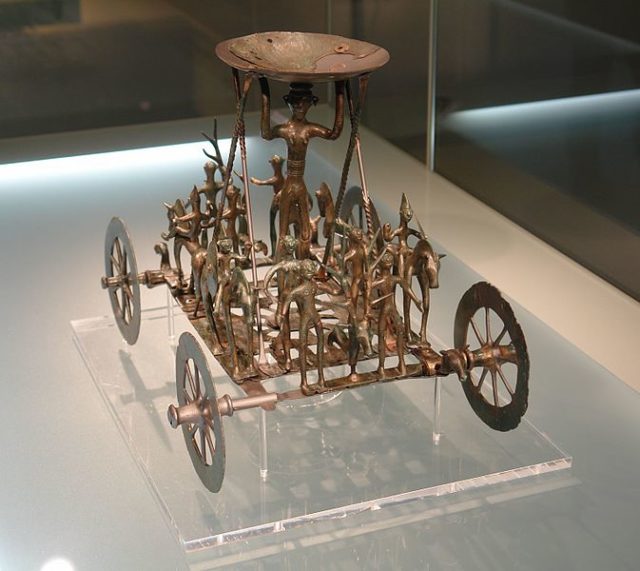
Shortly after its discovery, controversial discussions about the age, origin and symbolic meaning of the cult chariot started and have not stopped till today. Most researchers agree on dating the sculpture about 600 B.C. and it is assumed that this wagon might be used at some kinds of rituals to bring a symbolic material on the plate, though the exact use is not certain.
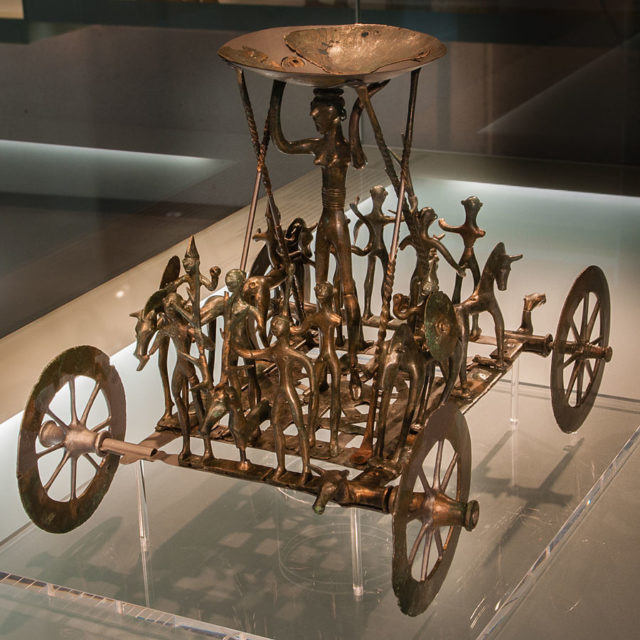
Associated with the Hallstatt culture, an early Celtic people, the bronze wagon consists of a square-shaped, open-worked base plate with four spoked wheels. A female figure approx. 32 cm high (twice as tall as the others) holding a bowl-shaped object in upraised hands stands in the center of the wagon and soldier-like men are holding shields, horses, and a fully-antlered stag at each end.
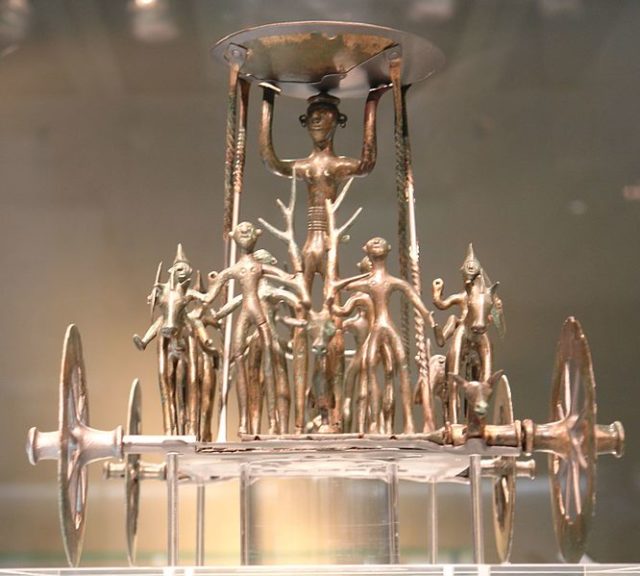
The bronze wagon has four wheels and each of them has eight spokes and all figures are situated in an almost symmetrical fashion on top. The female figure might be a goddess, a shaman or a person with a high social rank which shows parallels with the Mediterranean representations of vessel carriers The smaller figures are women and soldier-like men holding shields, horses, and a fully-antlered stag at each end.
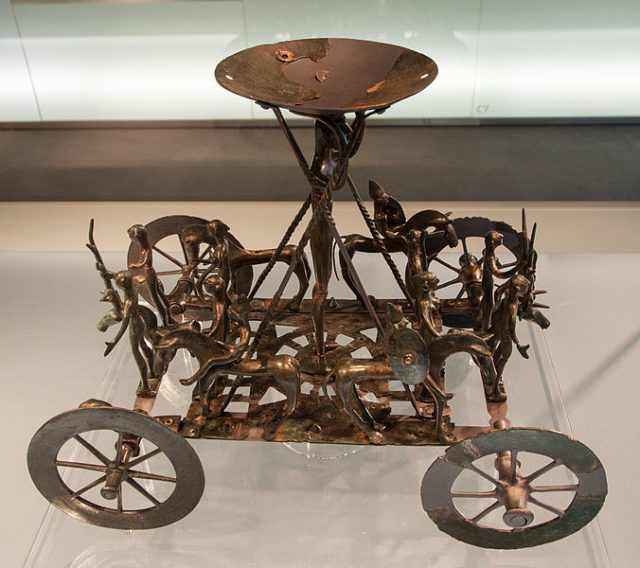
Recent restoration work and examination by experts has concluded that the bowl attributed to the wagon up to now cannot be conclusively proven to originally have been part of the cult wagon. In addition to the kettle bearer, numerous other figures in the form of both standing and mounted people, as well as animals similar to deer and to horses, are present on the wagon.
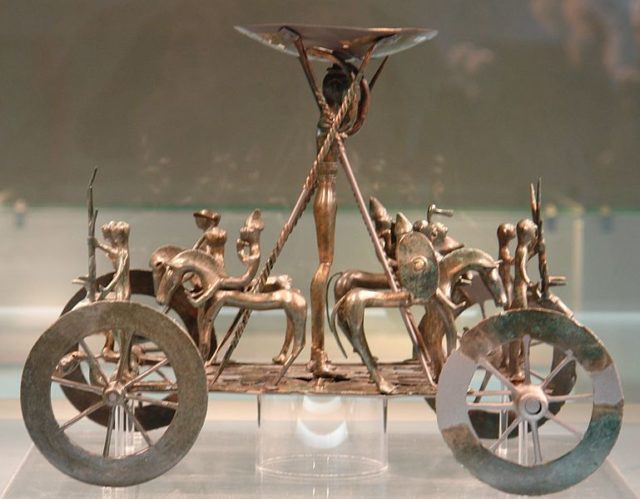
Archaeologists interpreted the scene as a sacrifice and the object probably served as a cult object for the consumption of a libation, a ritual pouring of a liquid, usually milk, rice or corn flour as an offering to a god or in memory of the dead. This practice was common in many past religions and continues to be offered in various cultures today. Besides the wagon, other grave goods, like jewelry, bronze amphorae, iron weapons, and tack and harness gear were found.
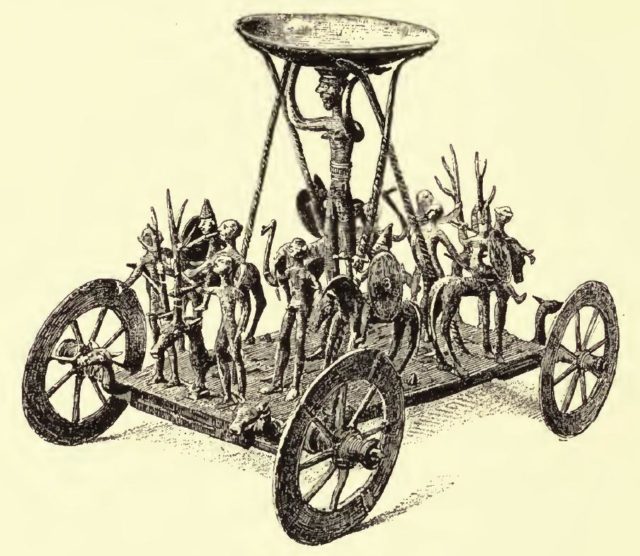
The Strettweg Sacrificial Wagon was restored in 2009 and is on display in the newly redesigned Archaeology Museum of Styrian Universalmuseum Joanneum at Schloss Eggenberg in Graz. A copy of this object is part of the collection in the museum in Judenburg.
